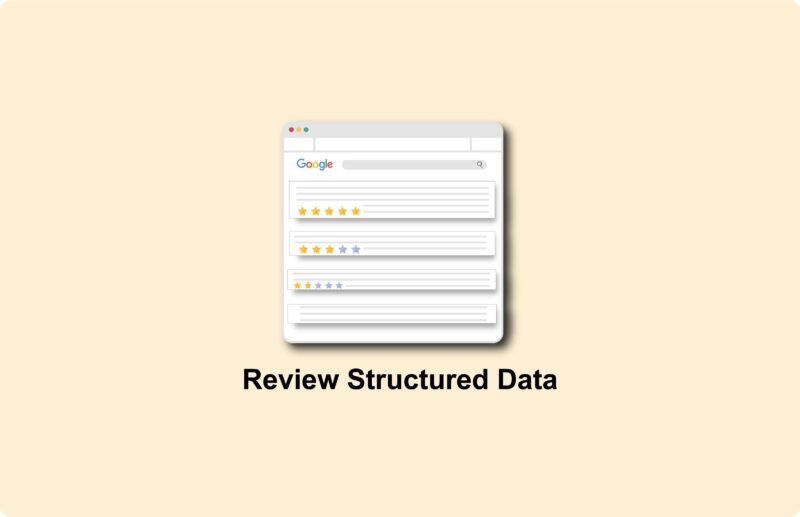Sitemap and SEO

A sitemap is a page or document on your website that contains links to all the pages of the website. Such a list with all the links to each page is a handy overview. Not only is it convenient for your visitors. It is also easier for the search engines to index.(1)
The visitor will find all pages in this overview. He/she searches for answers to a query, but may also come across other relevant information during his/her search. This way, visitors are more likely to stay on your website.
The search engines index websites. They do this by crawling the website by going from link to link. By listing all the pages on your website, you make it easier for the search engines to index it.
There are different sitemaps within SEO: a sitemap for the visitor (HTML) and a sitemap for the search engines (XML). In this article, I explain more about the sitemap and how to set it up.
The types of sitemaps within SEO
The XML sitemap
An XML sitemap is the sitemap for the search engines. This “table of contents” of the website is easier for search engines to access and less so for the visitor. An XML sitemap is best compressed using gzip to save bandwidth for the server.(2)

Optimizing XML sitemaps for SEO?
Optimizing XML sitemaps for SEO? I am happy to help! Please contact me using the contact form for this.
There is a limit to the number of links in an XML sitemap (about 50k URLs). To keep things organized, several sitemaps are often created. For example, consider a sitemap for all blogs on the website and a sitemap for all products (or regular pages). Examples include:
Sitemap: https://ralfvanveen.com/sitemap_index.xml (an index of all XML sitemaps on the website)
Sitemap: https://ralfvanveen.com/page-sitemap.xml (all pages)
Sitemap: https://ralfvanveen.com/post-sitemap.xml (all blogs)
An important point when creating an XML sitemap is to “submit” the sitemap to Google Search Console and/or Robots.txt. One of the two is enough. With the Robots.txt, you can put them in as shown above. Even if you don’t do this then chances are Google will pick them up.

XML sitemap for videos and images
Image sitemaps are designed to improve indexing of image content. In today’s SEO, images are embedded in the page content, making it crawled along with the URL(3).
Often an XML image sitemap is unnecessary. It would only take extra time. An XML image sitemap does have relevance when the images advance your business. For example, consider a stock photo website or product images on your product page.
If you have videos on your website that are critical, an XML video sitemap is needed. This is for the same reason we covered in the XML images sitemap.(4)
What tools do I use to generate XML sitemaps?
Some tools I like to use are the following:
- Yoast SEO (for WordPress)
- Google XML Sitemaps (for WordPress)
- Screaming Frog SEO Spider
- XML-Sitemaps.com
- SEMrush
What does an XML sitemap need to meet?
An XML sitemap must meet a number of requirements to be “optimized” for SEO. I actually see all things go wrong in practice, but herewith common points (in brief).
- maximum number of pages is 50,000 (or 50 MB as format);
- make sure the most important pages are in there;
- Use only absolute URLs;
- Use multiple sitemaps if necessary;
- Regularly update and submit to search engines (for frequent crawling);
- Use
, , and tags per URL; - ensure correct XML structure;
- Check for errors and validate the sitemap;
- use HTTPS URLs;
- keep in mind the canonical tags;
- Process only 2xx pages in the XML sitemap;
- Use of a sitemap index file for multiple sitemaps.
HTML sitemap
XML sitemaps take care of search engine needs. Therefore, these sitemaps can only be “read” by the search engines. HTML sitemaps are designed to help human users find content.
This promotes the usability of your website. You provide an overview for your visitors of all the pages on your website. Thus, the visitor finds answers to his/her question faster and easily.
What does an HTML sitemap need to meet?
Now the same list, but for HTML sitemaps.
- Include the most important pages in the HTML sitemap;
- A separate HTML sitemap must be created for each language;
- Place the HTML sitemap in an accessible location (often the footer);
- Use clear and descriptive anchor texts;
- Limit the length of the sitemap for usability (about 200 URLs);
- Provide a dynamic HTML sitemap;
- Use a logical hierarchy and categories;
- Add a search bar for ease of use (optional);
- only use 2xx pages.
What tools do I use to generate an HTML sitemap?
Some tools I like to use for this (especially in WordPress, this is easy to do):
- Yoast SEO (for WordPress)
- Rank Math (for WordPress)
- Screaming Frog SEO Spider
- A1 Sitemap Generator
- Inspyder Sitemap Creator
Conclusion
It is good to invest time in creating a good sitemap to optimize your SEO. Both for the search engines, and for your visitor, the sitemap is relevant. An XML sitemap ensures proper indexing from the search engines. An HTML sitemap promotes usability for your visitor. Use my checklists to optimize them for this purpose. Good luck!
- What Is a Sitemap | Google Search Central | Documentation | Google for Developers. (s.d.). Google For Developers. https://developers.google.com/search/docs/crawling-indexing/sitemaps/overview
- Sitemaps.org – home. (s.d.). https://www.sitemaps.org/
- Image Sitemaps | Google Search Central | Documentation | Google for Developers. (s.d.). Google For Developers. https://developers.google.com/search/docs/crawling-indexing/sitemaps/image-sitemaps
- Video Sitemaps and Examples | Google Search Central | Documentation | Google for Developers. (s.d.). Google For Developers. https://developers.google.com/search/docs/crawling-indexing/sitemaps/video-sitemaps
Frequently Asked Questions
What types of sitemaps are there?
Usually, when it comes to sitemaps, a distinction is made between the XML sitemap and the HTML sitemap. However, then are not the only species out there:
- XML sitemap: is read only by search engines
- XML image sitemap: a list to improve indexing of image content
- SML video sitemap: a list to improve indexing of video content
- Mobile sitemap: sitemaps for phone pages (not to be confused with smartphone compatibility pages)
- HTML sitemap: to promote usability, intended to help human users find page content
How do I create a sitemap?
Creating a sitemap is not a complicated matter. Most business owners work with WordPress. Creating a sitemap is then done with the Yoast plugin. Within this tool, choose “SEO” and then “General.
Then by checking the ‘XML sitemap’ feature, your sitemap will be created automatically. After that, you’re not done. After all, you have to inform Google about it. Submitting your sitemap is easily done with the Google Search Console. This is a simple process consisting of a few short steps.
How do I detect errors in a sitemap?
There are several ways to detect and correct errors in a sitemap. One way is to use online sitemap validation tools, which allow you to upload your sitemap and check it for errors. Google Search Console is also a free tool that allows you to monitor your website’s performance in Google Search and check your sitemap for errors.
You can also use a text editor to check the sitemap for errors. Another way is to test the sitemap in a web browser and check for links that don’t work or are incorrect (this does take considerably longer).
Can the wrong sitemap have a negative impact on SEO?
Yes, an incorrect sitemap can have a negative impact on SEO. For example, an incorrect sitemap can lead to:
- Missing important pages: if the sitemap does not contain all the important pages of your website, search engines may miss these pages and not include them in search results.
- Crawl errors: if the sitemap contains incorrect URLs or links, it can lead to crawl errors and problems indexing your website’s content.
- Poor user experience: if visitors to your website cannot find what they are looking for because of an incorrect or missing sitemap, this can lead to a poor user experience and a higher bounce rate.






